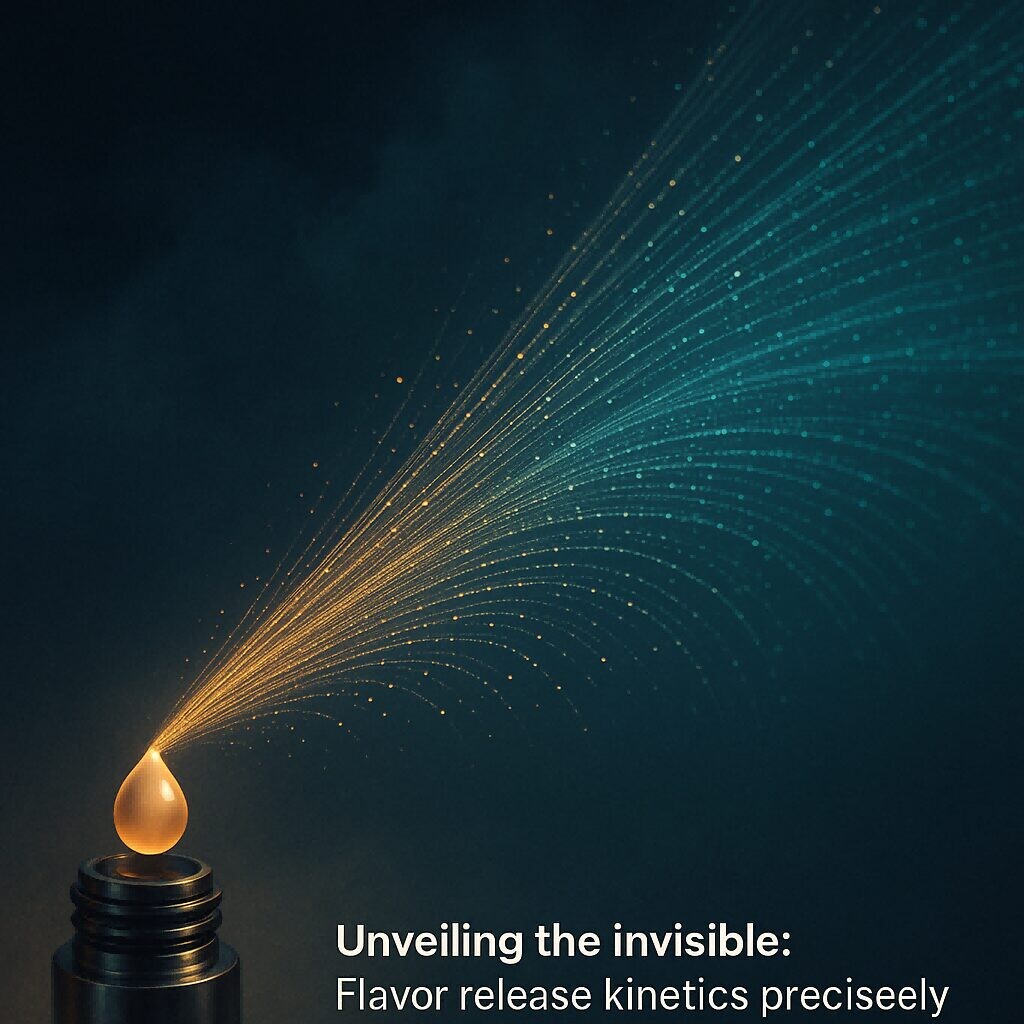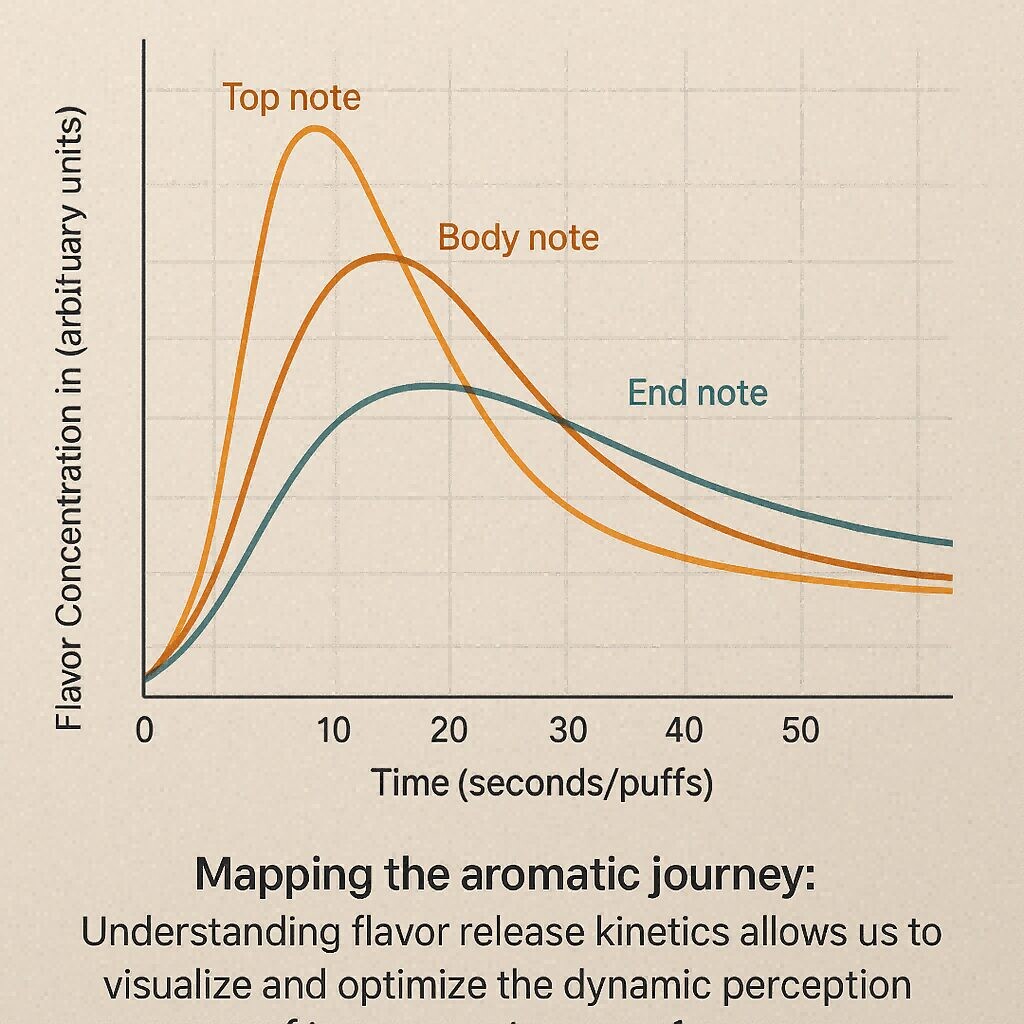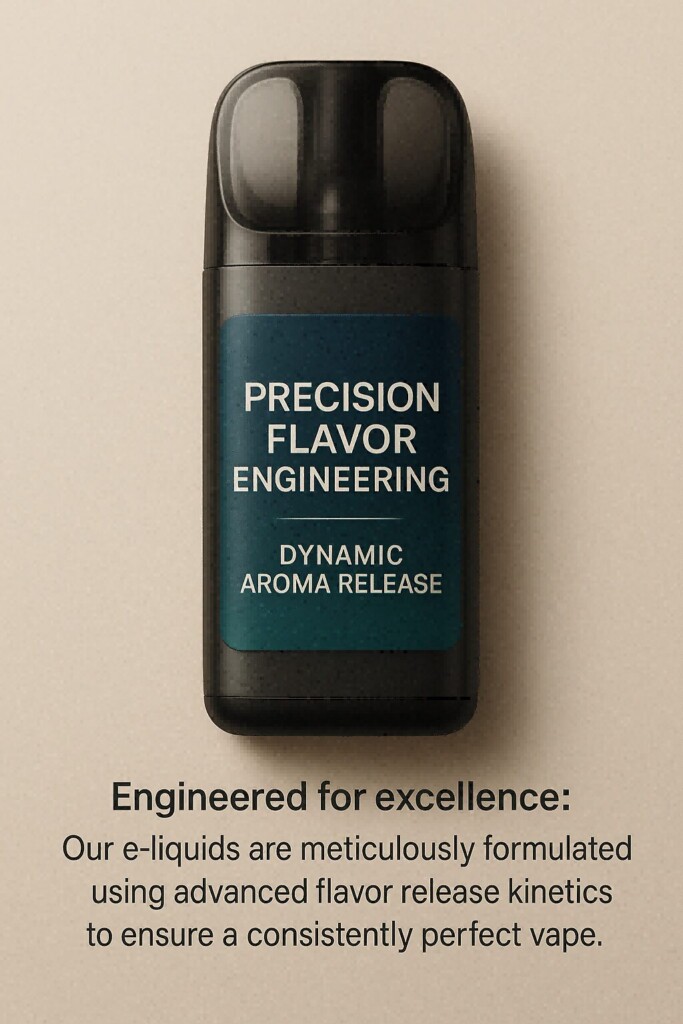Introduction:In the competitive and rapidly evolving vaping industry, creating an exceptional e-liquid goes far beyond simply mixing appealing flavors. The true artistry lies in understanding and controlling how those flavors are perceived by the user over time – from the initial impactful burst to the satisfying lingering notes. This dynamic process is governed by flavor release kinetics, a complex interplay of physical and chemical phenomena that dictates the rate and profile of aroma delivery. By mastering the art of modeling and predicting user sensory experience, manufacturers can move beyond trial-and-error, engineering e-liquids that offer consistent, authentic, and truly satisfying flavor journeys. This blog post will delve into the intricate science behind flavor release kinetics, exploring how advanced modeling techniques are revolutionizing e-liquid formulation and elevating the global vaping experience.

Flavor release kinetics performance
Our perception of flavor is not a static event. It’s a continuous, multi-stage process influenced by a multitude of factors, particularly in the context of vaping:
The “perfect” flavor is not just about the right blend of compounds, but about the right sequence and duration of their release. If top notes disappear too quickly, the flavor feels “flat.” If body notes are weak, the experience is unsatisfying. If aftertastes are unpleasant or too long, it detracts from overall enjoyment.
Flavor release kinetics is the study of the rates at which flavor compounds are released from a food or, in our case, an e-liquid matrix into the vapor phase, and subsequently delivered to the olfactory and gustatory receptors. It’s a real-time analysis of flavor compound concentration in the vapor as a function of time, influenced by various physical and chemical factors.
(1)PG/VG Ratio:Propylene Glycol (PG) is thinner and a better flavor carrier, leading to faster flavor release. Vegetable Glycerin (VG) is thicker, reducing volatility and slowing down release. The ratio directly impacts vapor density and flavor intensity.
(2)Flavor Concentration:Higher concentrations generally lead to more intense initial release, but may not guarantee sustained release if kinetic principles aren’t optimized.
(3)Presence of Other Components:Nicotine, water, and other additives can influence the viscosity, surface tension, and vapor pressure of the e-liquid, thereby affecting flavor release.
(4)Flavor Molecule Properties:Each flavor compound has a unique volatility, molecular weight, polarity, and affinity for PG/VG, all of which dictate its release rate.
(1)Coil Temperature:Higher temperatures generally lead to faster and more complete vaporization of flavor compounds. However, excessive heat can also cause thermal degradation, leading to off-notes.
(2)Coil Type and Surface Area:Material (Kanthal, Nichrome, SS), resistance, and coil geometry (mesh, conventional wire) influence heat distribution and surface area available for vaporization, impacting release kinetics.
(3)Airflow:The rate and volume of air drawn through the coil affect the dilution and transport of flavor compounds to the user’s mouth and nose.
(4)Puff Duration and Frequency:Longer puffs, or more frequent puffs, can alter the coil’s temperature profile and the perceived flavor intensity over time.
(1)Encapsulation:Techniques like micro- or nano-encapsulation can profoundly alter release kinetics. The encapsulating material acts as a barrier, controlling the rate at which flavors evaporate or are thermally released. This is crucial for sustained release, protection from degradation, and targeted delivery.
(2)Binding to Matrix:Some flavor compounds may interact with or bind to components of the e-liquid or coil material, temporarily delaying their release.

Flavor release kinetics graph analysis
Moving beyond empirical trial-and-error, advanced analytical techniques and mathematical modeling are becoming indispensable tools for optimizing flavor release kinetics.
(1)Once sufficient analytical data is gathered, mathematical models can be developed to predict flavor release under various conditions. These models often incorporate:
(2)Sophisticated software can then simulate different e-liquid formulations and vaping parameters, allowing formulators to:
Mastering flavor release kinetics offers a profound competitive advantage for e-liquid manufacturers:

Precise flavor engineering
Navigating the complexities of flavor release kinetics requires a flavor partner with deep scientific expertise, state-of-the-art analytical capabilities, and a keen understanding of vaping device dynamics.
CUIGUAI Flavoring stands at the forefront of this advanced science, leveraging its profound expertise in flavor release kinetics to develop unparalleled e-liquid specific flavors. Their dedicated R&D team employs cutting-edge analytical techniques, including advanced GC-MS and sensory modeling, to meticulously map and predict the release profiles of their aromatic compounds. This data-driven approach allows CUIGUAI Flavoring to engineer flavors that deliver optimal initial impact, sustained body, and satisfying finish, truly optimizing the user sensory experience. By understanding the interplay between e-liquid composition, vaping parameters, and flavor kinetics, CUIGUAI Flavoring ensures the exceptional performance, stability, and authenticity of their electronic liquid essences, enabling manufacturers to offer a consistently superior and highly differentiated product.

Click here to get a free sample
The era of static, one-dimensional flavors in vaping is giving way to a new frontier of dynamic, precisely controlled aroma experiences. By embracing the science of flavor release kinetics, manufacturers can transition from simply adding flavors to scientifically engineering sensory journeys.
This sophisticated approach empowers brands to:
The future of vaping is not just about clouds, but about the invisible symphony of flavor molecules unfolding perfectly, puff after exquisite puff, meticulously orchestrated by the principles of flavor release kinetics. It’s the science that transforms a good vape into an extraordinary sensory delight.
Keywords: flavor release kinetics, modeling and predicting user sensory experience, e-liquid flavor, sensory science, aroma delivery, volatile compounds, vaping optimization
Author: R&D Team, CUIGUAI Flavoring
Published by: Guangdong Unique Flavor Co., Ltd.
Last Updated: Jul 28, 2025
The business scope includes licensed projects: food additive production. General projects: sales of food additives; manufacturing of daily chemical products; sales of daily chemical products; technical services, technology development, technical consultation, technology exchange, technology transfer, and technology promotion; biological feed research and development; industrial enzyme preparation research and development; cosmetics wholesale; domestic trading agency; sales of sanitary products and disposable medical supplies; retail of kitchenware, sanitary ware and daily sundries; sales of daily necessities; food sales (only sales of pre-packaged food).
Copyright ©Guangdong Unique Flavor Co., Ltd.All Rights Reserved. Privacy Policy